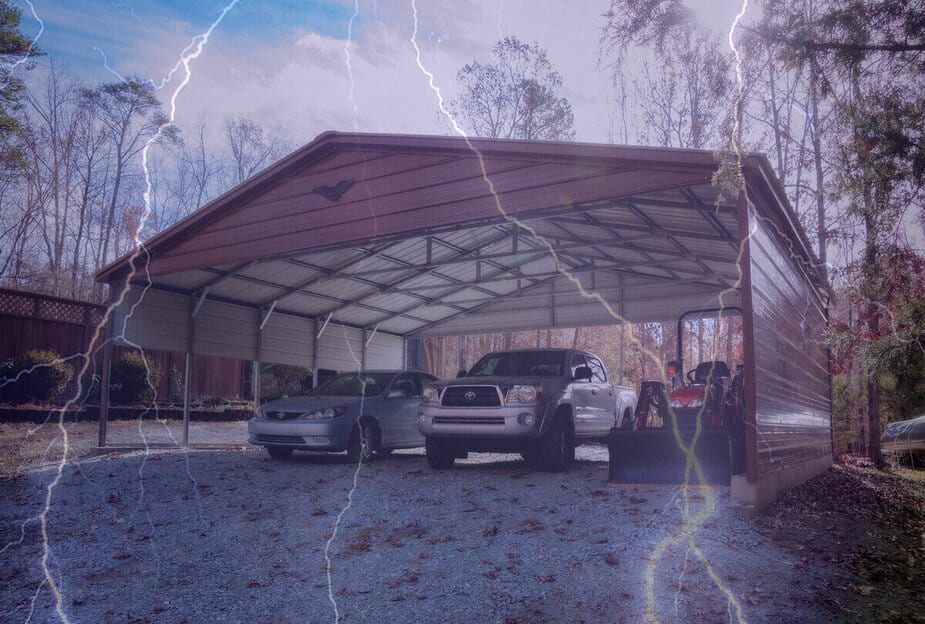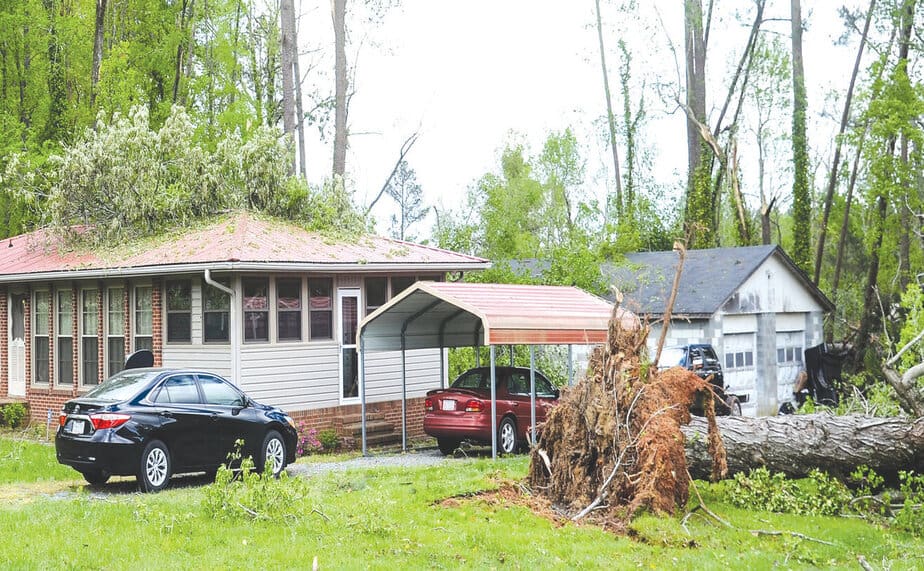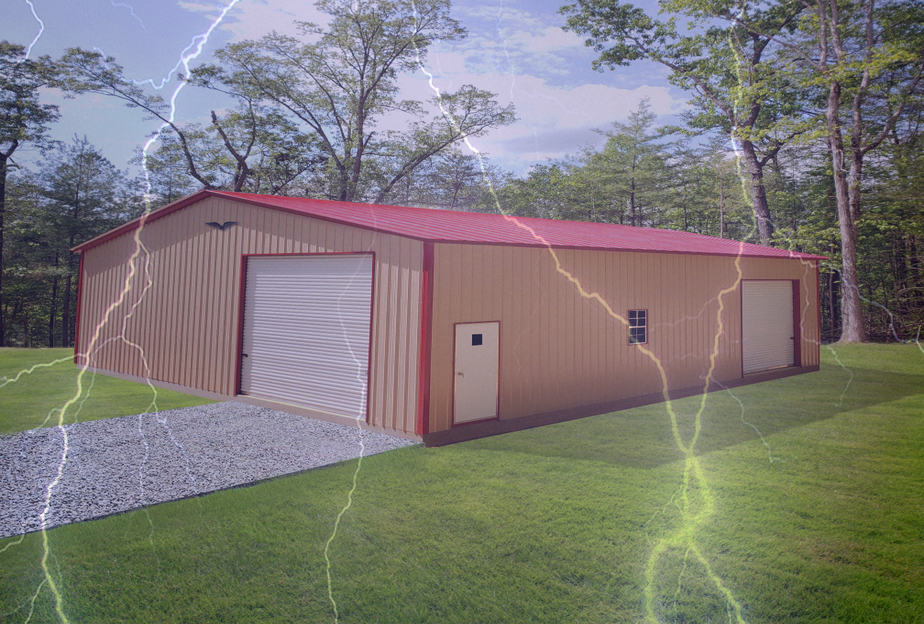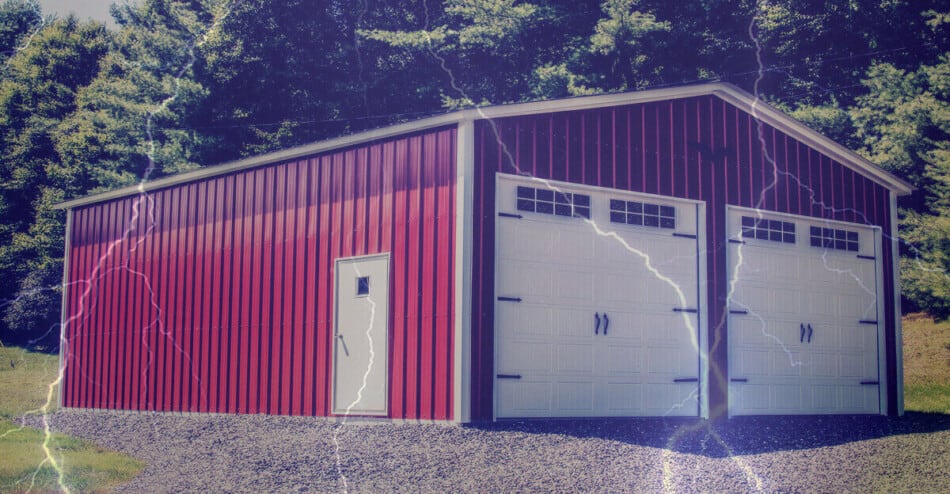Choosing building materials is often more about how they can stand up against the weather than pure aesthetics. At some point, every building must face some severe weather. It might be strong winds, heavy rain or snow, large hail, firestorms, or anything in between. These storms can rip off roofs, blow out windows, or even collapse whole structures.
Metal buildings are among the few building formats that can survive severe weather, but only if they are designed properly. Most steel and aluminum panels are even severe weather tested before you buy them. Often, the only reason metal construction would fail is because of faulty junctures between the sheets.
Therefore, if you want your metal building to last, you must ensure it was built according to code with secure and sealed joints. Fortunately, you can fix any such issues with any completed structure without ripping it apart.
Metal Buildings and the Weather

Metal construction produces some of the strongest buildings on the market. Depending on how they were made, these structures can withstand most hurricanes while snow slides right off them. They are structures truly meant to last.
Most metal building strength comes from the pre-engineered, high-grade, commercial-quality, 29-gauge premium steel that goes into them. This steel resists rust, termites, and salt erosion, making them durable and stronger than other construction materials.
The rest of the lasting power comes from their construction. Engineers learned a lot from the devastating effects of severe storms such as Hurricane Katrina to make construction guides designed to handle anything. As wall junctures and roof edges are the weakest points, engineers placed extra reinforcements in these critical areas. Now, most metal buildings can withstand winds up to 170 miles per hour.
Another important feature of a durable metal building is its curved, slanted roof. Curved roofs offer wind resistance but let rain and snowfall away from the center of the roof. The curvature needed depends on the area and the severe weather the building is expected to see.
However, no type of building will withstand anything if it is not built to local regulations and building codes. Different types of extreme weather systems present different sets of challenges for building construction. A metal building designed for extreme weather in Florida may not survive in Maine, for instance.
Still, prefabricated metal buildings are still your best bet when nature comes knocking on your door. Metal buildings are often the only buildings left intact after hurricanes.
Are Metal Buildings Safe in a Tornado?

Tornados are one of the few extreme weather phenomena you can find everywhere. Because of this, everyone needs some tornado protection even if they do not live in a tornado-prone area.
With that said, metal buildings can and do survive tornados. Every tornado-resistant structure requires reinforced roofs, windows, and walls regardless of whether they are metal or not. Even then, a tornado rushing through the building will still cause lasting effects.
Impact-resistant windows, and a fastened metal roof helps, but the key tornado-safety feature of metal construction is that it creates a reliable safe room. The tornado may lift the building off its foundation if it was not properly secured, but you and your stuff inside will remain relatively intact.
Steel buildings are long-lasting and low-maintenance structures that provide excellent security for your belongings for many years. These structures can typically withstand winds of up to 170 miles per hour.
Tornadoes, on the other hand, can potentially cause additional damage like wind—moisture, airborne debris, and fire. If you secure properly during construction you can help to minimize damage. Please keep this in mind when purchasing a pre-engineered building. Consult with your contractor.
How to Build a Weather-resistant Metal Building
Metal buildings can survive severe weather only because they were properly made in the first place. The metal itself is strong and heavy enough on its own, but that means nothing if the wind, water, and snow get through the breaks in the sheets. To that end, most building codes require every building at least to resist wind effects.
The key is to have a system in place that pushes the air or water towards the designated load-bearing elements of the structure. You can have either vertical or lateral paths to these structural elements. Your metal building should also have a solid foundation that can support the structure and anything that might rest on it.
Each of these components must be properly fastened and riveted together either through direct attachment or an anchorage.
- Design for strength – Use stainless or double hot-dipped galvanized steel straps, anchor bolts, tie-downs, metal plates, or embedded connectors.
- Block or patch anywhere water can seep through – Water penetration can create places for mold and other pests to create cavities that can weaken walls and the roof.
- Gutters should overflow everywhere – Heavy rain and snow can easily clog gutters and downspouts and wash away the foundation.
- Have storm shutters and impact-resistant windows – High winds can turn any object into a bullet that can break windows and damage building structures.
- Build roofs on an incline – The weight of heavy snow and rain can bend metal so your roof must have a steep enough pitch to let the show and water flow off it.
When lightning hits a metal structure, what happens?

Any energy from a lightning strike can be safely transmitted to the ground below a metal roofed structure, leaving personal property unaffected. Furthermore, the fire-resistant nature of metal means that your building will be much safer in the unlikely event of a lightning strike.
The Upshot
Metal buildings can withstand severe weather, but only if they were built properly to handle the storms. The key is reinforcing the weak spots so that the wind and water cannot get under the metal sheets or the foundation.
Steel is the pioneer in the development of environmentally sustainable initiatives around the world. Additionally, it can be recycled regularly without losing dignity and strength.
Homeowners, companies and communities searching for a cost-effective way to design a custom-built structure that can stand the test of time are seeking metal buildings to fulfill all their needs.
From their potential to be made-to-order, to their low-cost design and longevity, metal buildings are a safe construction option that offers unrivaled safety against weather for many years on end.
Other Related Topics
Do Metal Buildings Offer Safety
Metal structures, on the other hand, provide more than just reliable protection from the occasional wind or ice storm, hurricane, or tornado; they also shield a building’s interior contents from day-to-day enemies including insect infestations, mold, mildew, and rot.
Like all well-built buildings, metal buildings are designed to protect and keep your belongings safe from inclement weather conditions. They’ve even been designed to withstand fire to some degree. However, safety from snow, hail, hurricanes, and earthquakes, are based on the building’s location and local building codes.
How do you secure a metal building?
Metal structures can easily be augmented in terms of protection, starting with the doors and windows and ending with measures that prevent criminals from even accessing the building.
A security system also helps to deter intruders in addition to strong locks, secured garage doors, motion detectors and cameras.
Get Most Out of Your Metal Buildings!



Recent Comments